Related Research Articles

Ansel Easton Adams was an American landscape photographer and environmentalist known for his black-and-white images of the American West. He helped found Group f/64, an association of photographers advocating "pure" photography which favored sharp focus and the use of the full tonal range of a photograph. He and Fred Archer developed a system of image-making called the Zone System, a method of achieving a desired final print through a technical understanding of how the tonal range of an image is the result of choices made in exposure, negative development, and printing.

In photography and videography, multi-exposure HDR capture is a technique that creates high dynamic range (HDR) images by taking and combining multiple exposures of the same subject matter at different exposure levels. Combining multiple images in this way results in an image with a greater dynamic range than what would be possible by taking one single image. The technique can also be used to capture video by taking and combining multiple exposures for each frame of the video. The term "HDR" is used frequently to refer to the process of creating HDR images from multiple exposures. Many smartphones have an automated HDR feature that relies on computational imaging techniques to capture and combine multiple exposures.

Group f/64 or f.64 was a group founded by seven 20th-century San Francisco Bay Area photographers who shared a common photographic style characterized by sharply focused and carefully framed images seen through a particularly Western (U.S.) viewpoint. In part, they formed in opposition to the pictorialist photographic style that had dominated much of the early 20th century, but moreover, they wanted to promote a new modernist aesthetic that was based on precisely exposed images of natural forms and found objects.
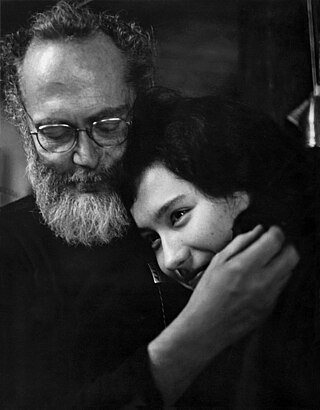
William Eugene Smith was an American photojournalist. He has been described as "perhaps the single most important American photographer in the development of the editorial photo essay." His major photo essays include World War II photographs, the visual stories of an American country doctor and a nurse midwife, the clinic of Albert Schweitzer in French Equatorial Africa, the city of Pittsburgh, and the pollution which damaged the health of the residents of Minamata in Japan. His 1948 series, Country Doctor, photographed for Life, is now recognized as "the first extended editorial photo story".
Pure photography or straight photography refers to photography that attempts to depict a scene or subject in sharp focus and detail, in accordance with the qualities that distinguish photography from other visual media, particularly painting. Originating as early as 1904, the term was used by critic Sadakichi Hartmann in the magazine Camera Work, and later promoted by its editor, Alfred Stieglitz, as a more pure form of photography than Pictorialism. Once popularized by Stieglitz and other notable photographers, such as Paul Strand, it later became a hallmark of Western photographers, such as Edward Weston, Ansel Adams and others.

Eugène Atget was a French flâneur and a pioneer of documentary photography, noted for his determination to document all of the architecture and street scenes of Paris before their disappearance to modernization. Most of his photographs were first published by Berenice Abbott after his death. Though he sold his work to artists and craftspeople, and became an inspiration for the surrealists, he did not live to see the wide acclaim his work would eventually receive.

Dodging and burning are terms used in photography for a technique used during the printing process to manipulate the exposure of select areas on a photographic print, deviating from the rest of the image's exposure. In a darkroom print from a film negative, dodging decreases the exposure for areas of the print that the photographer wishes to be lighter, while burning increases the exposure to areas of the print that should be darker.

Nancy Wynne Newhall was an American photography critic. She is best known for writing the text to accompany photographs by Ansel Adams and Edward Weston, but was also a widely published writer on photography, conservation, and American culture.
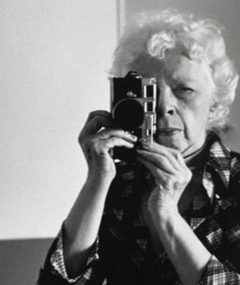
Lisette Model was an Austrian-born American photographer primarily known for the frank humanism of her street photography.
Marie Cosindas was an American photographer. She was best known for her evocative still lifes and color portraits. Her use of color photography in her work distinguished her from other photographers in the 1960s and 1970s. Most of her photographs were portraits and pictures of objects like dolls, flowers, and masks.

Conservation photography is the active use of the photographic process and its products, within the parameters of photojournalism, to advocate for conservation outcomes.

Richard Steven Street is an American photographer, historian and journalist of American farmworkers and agricultural issues. He is well known for his multi-volume history of California farmworkers and photo essays.

Moonrise, Hernandez, New Mexico is a black-and-white photograph taken by Ansel Adams, late in the afternoon on November 1, 1941, from a shoulder of highway US 84 / US 285 in the unincorporated community of Hernandez, New Mexico. The photograph shows the Moon rising in a dominating black sky above a collection of modest dwellings, a church and a cross-filled graveyard, with snow-covered mountains in the background. Adams captured a single image, with the sunset lighting the white crosses and buildings. Because Adams did not date the image, attempts have been made to determine a date from astronomical information in the photograph. It is one of Adams' most popular works.

Taos Pueblo is a book by Ansel Adams and Mary Hunter Austin. Originally published in 1930, it is the first book of Adams' photographs. A seminal work in his career, it marks the beginning of a transition from his earlier pictorialist style to his signature sharp-focused images of the Western landscape. It has been described as "an astonishingly poignant…masterpiece" and "the greatest pictorial representation of the American West."
Lou Bernstein was an American photographer and teacher. His career began during the Great Depression and the Photo League and ended shortly before he died.
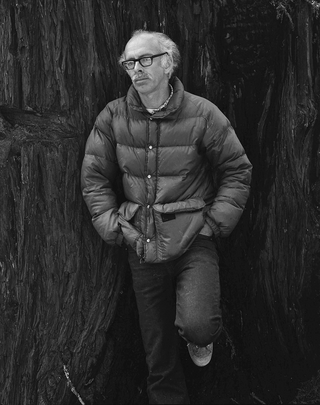
Ray McSavaney was an American fine-art photographer based in Los Angeles, California. Throughout a spartan but active life, practicing classical Western black and white fine art photography, he made enduring photographs of buildings, bridges, and street scenes of the vast city, ancient ruins and panoramic vistas of the Southwest, and studio setups with varied floral subjects. He died from lymphoma in Los Angeles Veteran's Hospital. Warm tributes to his life and career by some of his close friends and colleagues appear in a ‘celebration of life’ memorial recounted in ‘View Camera’ magazine.

Monolith, the Face of Half Dome, Yosemite National Park, California is a black and white photograph taken by Ansel Adams in 1927 that depicts the western face of Half Dome in Yosemite, California. In the foreground of the photo, viewers are able to see the texture and detail of the rock as well as the background landscape of pine trees and the Tenaya Peak. Monolith was used by the Sierra Club as a visual aid for the environmental movement, and was the first photograph Adams made that was based on feelings, a concept he would come to define as visualization and prompt him to create the Zone System. The image stands as a testament to the intense relationship Adams had with the landscape of Yosemite, as his career was largely marked by photographing the park. Monolith has also physically endured the test of time as the original glass plate negative is still intact and printable. The photograph is a part of the portfolio Parmelian Prints of the High Sierras, released in 1927.
Rebecca A. “Becky” Senf is an American writer, and curator working in the field of photography. She is the Chief Curator at the Center for Creative Photography (CCP). She joined the CCP as Norton Family Assistant Curator in 2007, which was a joint appointment with Phoenix Art Museum, and was promoted to Chief Curator in 2016.
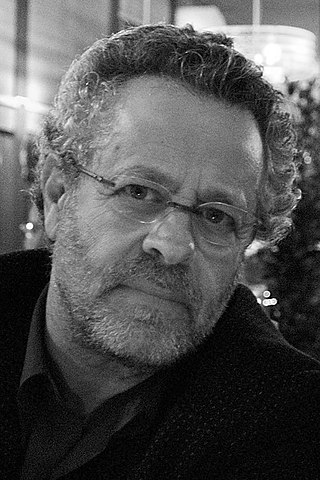
Arthur Ollman is an American photographer, author, curator, professor emeritus (San Diego State University, and founding director of The Museum of Photographic Arts, San Diego. He served as MoPA director from 1983 to 2006, and as director of the School of Art, Design and Art History, SDSU, from 2006 to 2011. He was president of the board of directors for the Foundation for the Exhibition of Photography and has authored and contributed to more than twenty-five books and catalogs.
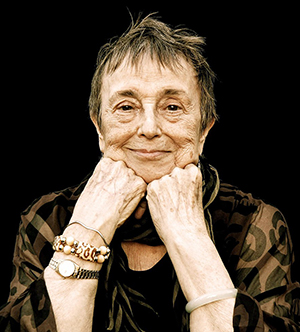
Zoe Lowenthal Brown was an American photographer, painter, technical writer and editor. Her work as a photographer has been affiliated with Minor White.
References
- ↑ "How to Create a Photo Essay: Step-by-Step Guide With Examples – 4 Photo Essay Examples". MasterClass. 8 November 2020.
- ↑ "W. Eugene Smith's Landmark Photo Essay, 'Nurse Midwife'". time.com. Archived from the original on May 29, 2015. Retrieved 2018-06-14.
- ↑ "Ansel Adams in Color - Photo Essays". time.com. Retrieved 2018-06-14.
- ↑ "Haiti: Out of the Ruins - Photo Essays". time.com. Retrieved 2018-06-14.
- ↑ William Klein, lensculture.com. Retrieved 10 October 2020.
- ↑ Fulleylove, Rebecca (2 October 2017). "Peter Funch has photographed the same people on the same street for nine years". It's Nice That.
- ↑ Koziin, Allan. 2012. The Beatles, seen from unusual angles. New York Times, December 31, 2012, accessed 7-June-2014.
- ↑ Šinková, Veronika (20 June 2012). "Fotoesej a fotoreportáž v internetových verziách svetových denníkov či týždenníkov". Charles University . Retrieved 2018-06-14.